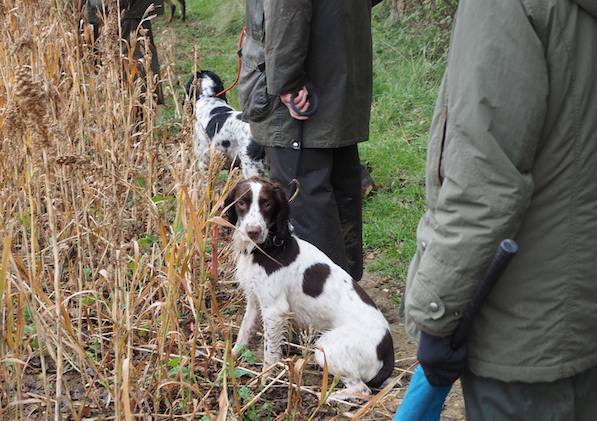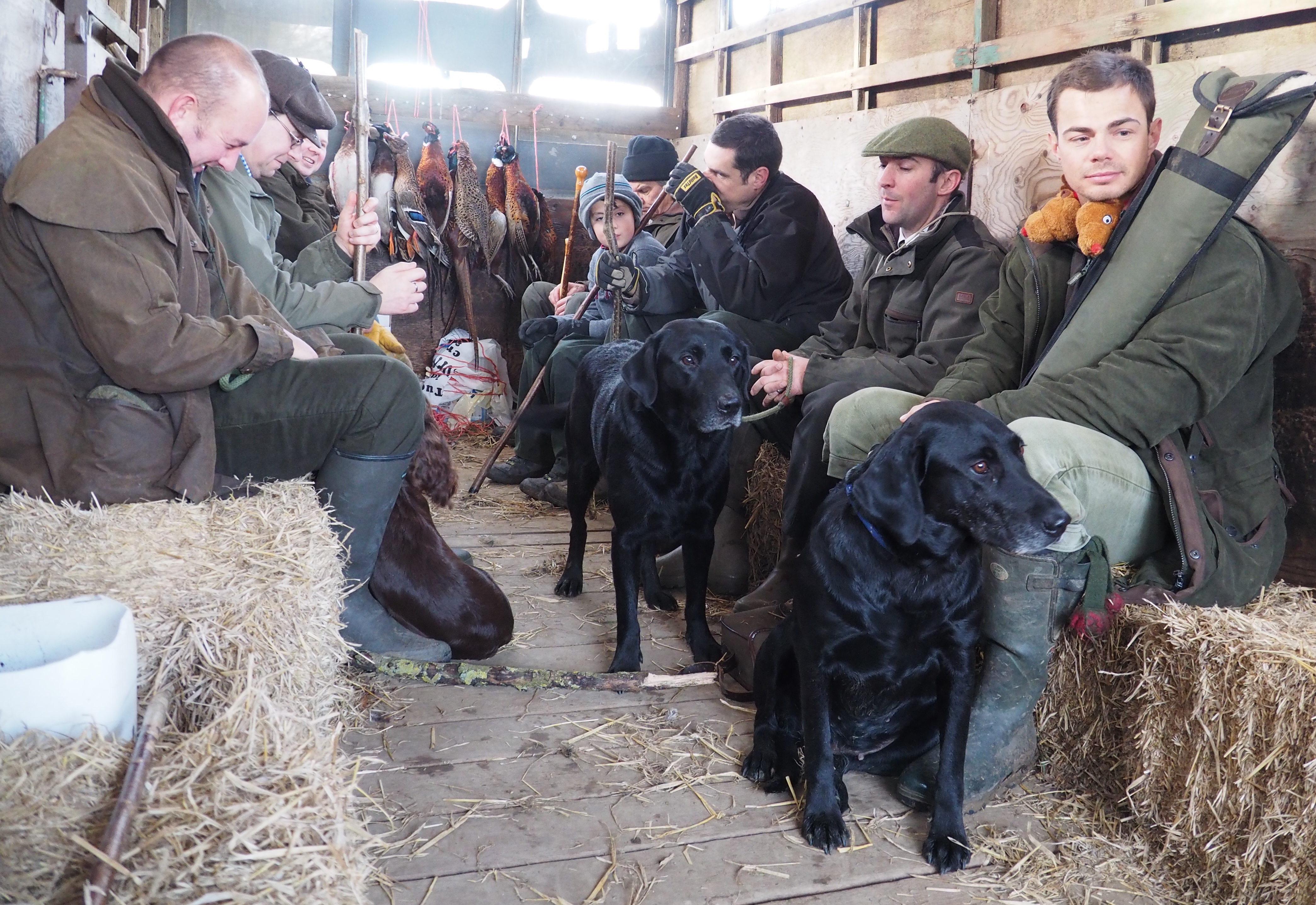Get your gundog ready for the beating line
People often ask: “How old should my dog be before taking it into the beating line?” The truth is there…
Win CENS ProFlex DX5 earplugs worth £1,149 – enter here
 Spaniels in the beating line
Spaniels in the beating line
Here are five tips to lessen gundog anxiety on those first few times in the beating line.
A dog used in the beating line should never be any further than 15m either side of you and about the same in front. It needs to hunt close and tight at all times.
A simple method to train a dog to stay close when hunting is to hide tennis balls in light cover to start with and encourage your dog to find the ball. You will always be close by and over a period of time, and by association, your dog will learn that if it stays close to you and follows your directions it will always find something good.
At this stage it may be a tennis ball, but later it may be a pheasant or rabbit.
Your dog needs to be trained to be steady. A dog that runs out of control at a flushing point is a liability and will probably result in you being asked to put the dog on the lead. You may not be asked back to the shoot again either.
There is less shame in putting your dog on a lead in the early days to stop it getting into trouble than being asked to control your dog. Seeing pheasants stack up at a flushing point is tempting for any gundog, let alone a youngster.
Being crammed into the back of a beaters’ wagon with strange dogs can be stressful for a first-timer. If possible, sit in the back of the trailer with him. That way the dog can see out and will have a bit of space. Keep an eye on your dog and see how he is reacting to the situation.

Being in the beaters’ wagon for the first time can be stressful for a young dog
It’s easy to lose a dog in maize covercrops. The best advice is either to keep your dog at heel or, again, to put him on a lead, though trying to negotiate thick maize stalks with a dog in tow is not easy.
If your dog is experienced and has a good hunting pattern you can quarter him up through the cover, but many dogs try to take the tramlines and will pull ahead, so it is better to keep the dog under control.
Quite often towards the end of the drive the keeper will ask the beaters to let their dogs go and work out the last of the cover. This is a time when disaster can strike and a bit of restraint is needed. Three things can happen: the first is that a situation may arise where the dogs are all working a relatively tight area and inevitably there will be competition, and in the heat of the moment your dog will ignore all your commands, with ensuing mayhem.
The second is when the flushing point has a wire fence or a bramble hedge line and, due to the pressure of the dogs, birds get caught (pegged). This is something you do not want to encourage as it can quickly become a habit.
The third situation is the most embarrassing and that is when your dog is able to see the gunline from the flushing point, sees birds being shot and decides it will go and join the picking-up team. Avoid these with forethought and training.
People often ask: “How old should my dog be before taking it into the beating line?” The truth is there…
Paul Rawlings shows you how to ensure you have the best gundogs on the beating line
If you were to look at the hierarchy of gundogs in the shooting field, you would more than likely consider dogs that work…
A young dog in the beating line will come across many new experiences. Strange noises, strange dogs, new scents. Most beaters carry sticks. Flags are popular on most shoots and the crack of a flag can unsettle even the most confident youngster. Get them used to this beforehand by waving plastic bags around their heads, along with making various beater’s noises. The more experience you can give a dog before he gets into the shooting field the better.
Get the latest news delivered direct to your door
Discover the ultimate companion for field sports enthusiasts with Shooting Times & Country Magazine, the UK’s leading weekly publication that has been at the forefront of shooting culture since 1882. Subscribers gain access to expert tips, comprehensive gear reviews, seasonal advice and a vibrant community of like-minded shooters.
Save on shop price when you subscribe with weekly issues featuring in-depth articles on gundog training, exclusive member offers and access to the digital back issue library. A Shooting Times & Country subscription is more than a magazine, don’t just read about the countryside; immerse yourself in its most authoritative and engaging publication.

